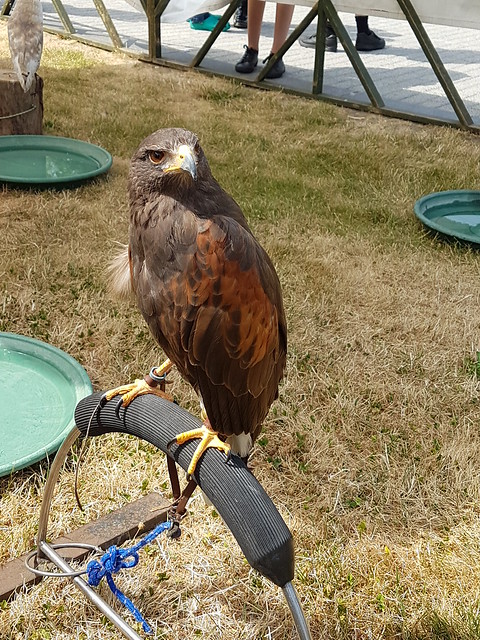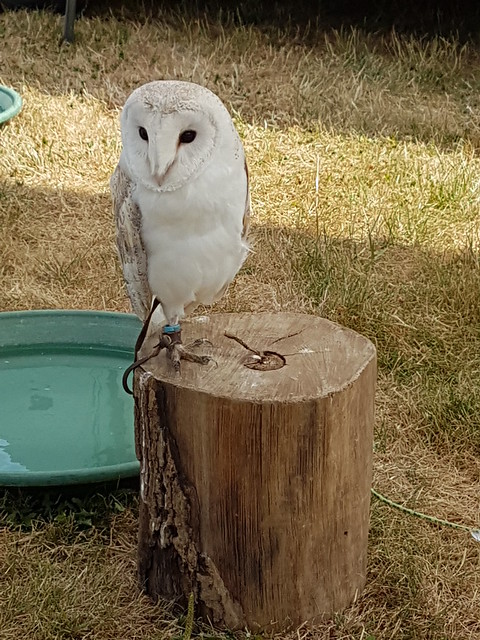I think I should get me a digiscoping adaptor
This is a handheld effort of a red kite - Realise now that I could have got it a little better with settings and alignment…
it was wonderful to see it eating on the post for five minutes or so through the scope
Great phonescoped image
It’s been a terrible summer for visiting swifts. They don’t breed in Shetland, but birder friends in Co Durham are contacting me and reporting unprecedented low sightings this year. It’s tragic to think that numbers of this amazing bird are declining at such a savage rate.

No, they’re Mallards
Is it just me or does anyone else think there are less Kestrels around compared to 10-20 years ago.
Used to be the only bird of prey you’d see in urban areas hovering over grass verges etc, but these days I see loads of buzzards and kites but can’t remember seeing a Kestrel for ages?
A few kestrels round here. They cruise up and down the bluffs and crags around Arthurs Seat.
We’re up at the Caravan on Saturday for just over a week. We look over the Fairfield Horseshoe from the front window, lovely climb. We are planning to do it again this year if it isn’t too hot.
Give us a shout if you are available for a beer  Our local is the Outgate Inn or on of the locals pubs in Ambleside.
Our local is the Outgate Inn or on of the locals pubs in Ambleside.
No, it’s not just you. Numbers are declining dramatically and there are a couple of organisations currently looking into the causes.
Causes they are investigating are
-
Habitat change
-
Lack of prey (small birds and voles)
-
Increased nest site competition from jackdaws and barn owls
-
Increased predation from buzzards, ravens and goshawks
-
Increased use of rodenticides (“rat poison”)
-
Negative impacts of a wetter climate (climate change)
From the BTO website
Declining population of Kestrel is likely to be due to multiple factors. Changes in agricultural practice have reduced the habitat for its prey species, such as voles (although population trends of small mammals are not easy to establish (Flowerdew et al. 2004, Macdonald et al. 2007). Small rodents are abundant in road verges which provide suitable habitat for these mammals (Bellamy et al. 2000). In turn, Kestrel may be drawn to hunting along roads with increased risks of collision with passing vehicles, although there is no evidence for this at present. More research is needed to establish links between potential factors and Kestrel population change. In the meantime, landowners keen to offer suitable Kestrel habitat should provide grassy cover for small mammals.
Small personal survey, drove from London to Norfolk this morning, saw many Kites and several buzzards but not a single kestrel.
we saw our first Kestrel in Herts earlier this week
Really interesting article.
Today - we are hosting Big Bang East science festival. Despite campus being overrun with hoards of kids, there are some really interesting science/engineering displays - Our roboticists are providing robot entainment. But the Raptor Foundation have brought a few birds for a static display - and they have set up just below my office window, so it’d be rude not to pay them a visit. Beautiful birds…
 20180705_112612 by uh_simon, on Flickr
20180705_112612 by uh_simon, on Flickr
 20180705_113159 by uh_simon, on Flickr
20180705_113159 by uh_simon, on Flickr
 20180705_112449 by uh_simon, on Flickr
20180705_112449 by uh_simon, on Flickr
 20180705_112700 by uh_simon, on Flickr
20180705_112700 by uh_simon, on Flickr
 20180705_112704 by uh_simon, on Flickr
20180705_112704 by uh_simon, on Flickr
apparently earlier today the campus cat got a bit close to the African Eagle Owl (the big one) and everything got a bit excited. Interesting in the warm weather they cool down by panting, and by standing in the cold water.
Had a nest of 4 blackbird chicks in the garden. been fascinating watching the adults feed them a conveyor belt of grubs, about one feed every ten minutes.
Chicks fledged yesterday and are now dispersed around the garden, taking shelter in any available shrub. Adult birds are having to work overtime to feed them, be very surprised if all 4 make it.
This one is in the Lilac, ugly little thing 
Unless they’re predated I see no reason why they wouldn’t survive. 4 is just an average clutch for town birds.









